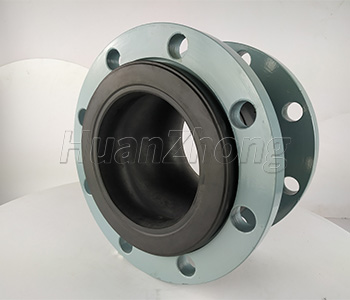Factors Determining the Degree of Wear Resistance of Marine Compensators.
Factors Determining the Degree of Wear Resistance of Marine Compensators.
Wear resistance is a critical characteristic of marine compensators, as they are subjected to various harsh conditions, including abrasive particles, corrosive substances, and mechanical stresses. The degree of wear resistance directly affects the compensators' longevity, reliability, and overall performance in marine applications. In this essay, we will explore the key factors that determine the degree of wear resistance of marine compensators.
Material Selection: The choice of material is crucial in determining the wear resistance of marine compensators. Materials with high hardness, corrosion resistance, and toughness are preferred. Common materials used for marine compensators include stainless steel, carbon steel, rubber, and various polymers. Stainless steel offers excellent corrosion resistance and hardness, making it suitable for marine environments. Rubber and polymers, such as natural rubber and synthetic elastomers, exhibit good resistance to abrasion and chemical degradation.
Corrosion Resistance: Marine environments expose compensators to corrosive substances, including saltwater, acids, and alkalis. The resistance of compensator materials to corrosion is essential in maintaining their wear resistance. Stainless steel, specifically austenitic stainless steel, is highly resistant to corrosion and is commonly used in marine compensators. Additionally, protective coatings or linings, such as epoxy or rubber coatings, can enhance the corrosion resistance of compensator materials.
Abrasion Resistance: Marine compensators often come into contact with abrasive particles, such as sand, silt, or other debris present in the water. The compensator's material should possess good resistance to abrasion to prevent excessive wear. Hardened materials or materials with filler reinforcements, such as carbon fiber, can enhance the compensator's abrasion resistance.
Mechanical Properties: The mechanical properties of the compensator materials play a significant role in wear resistance. High tensile strength, elongation, and impact resistance are desirable characteristics. These properties allow the compensators to withstand mechanical stresses, vibrations, and fatigue, reducing the likelihood of wear and failure over time.
Design and Construction: The design and construction of marine compensators can influence their wear resistance. Factors such as the geometry, thickness, and reinforcement of the compensator can affect its ability to withstand wear. Reinforcements, such as metal rings or braided wire, can add strength and improve wear resistance.
Maintenance and Inspection: Proper maintenance and regular inspection of marine compensators contribute to their overall wear resistance. Periodic cleaning, lubrication, and inspection for signs of wear or damage are essential to identify and address potential issues before they worsen. Prompt repair or replacement of worn or damaged components can help maintain the compensator's wear resistance.
Environmental Factors: Environmental factors, such as temperature, humidity, and exposure to UV radiation, may affect the degree of wear resistance of marine compensators. Extreme temperatures, prolonged exposure to sunlight, and high humidity levels can accelerate wear and degrade the compensator's material properties. Proper insulation, protective coatings, or frequent inspections and maintenance can help mitigate these effects.
In conclusion, the degree of wear resistance of marine compensators is determined by several factors, including material selection, corrosion resistance, abrasion resistance, mechanical properties, design and construction, maintenance and inspection practices, and environmental factors. Considering these factors and selecting appropriate materials and designs can ensure the longevity, reliability, and optimal performance of marine compensators in harsh marine environments.
